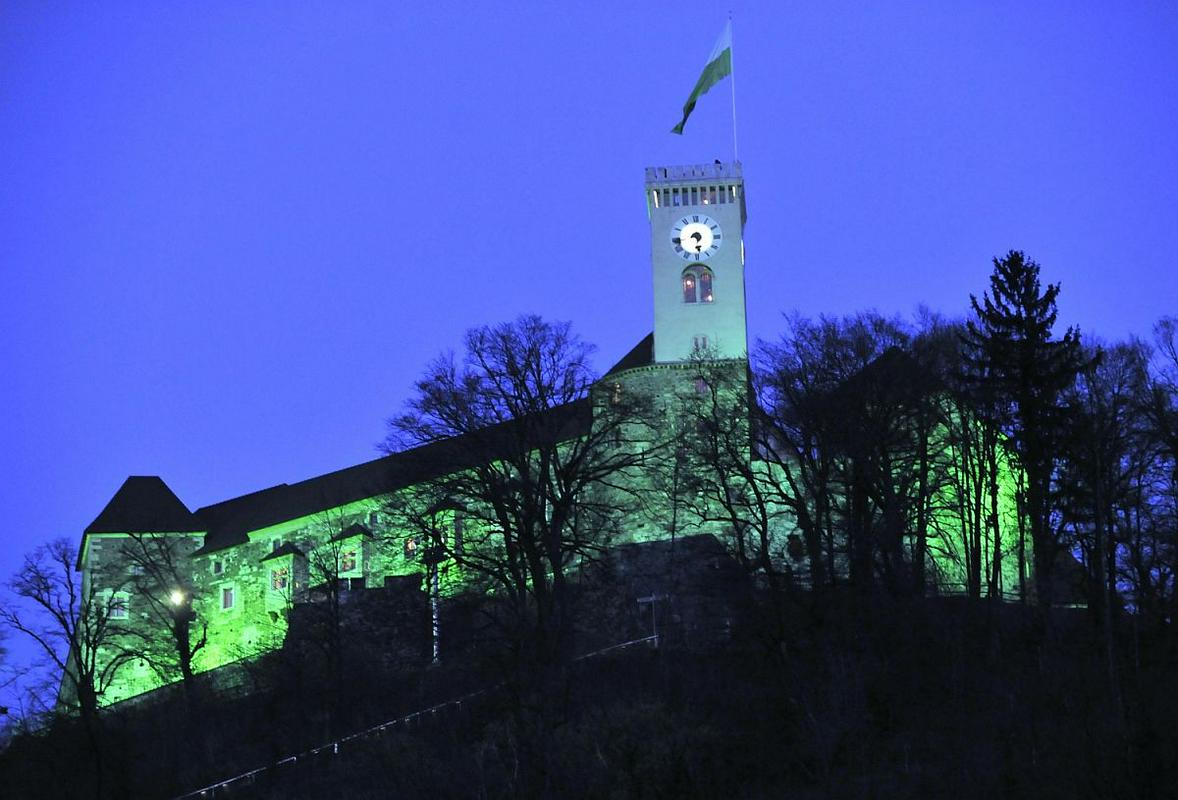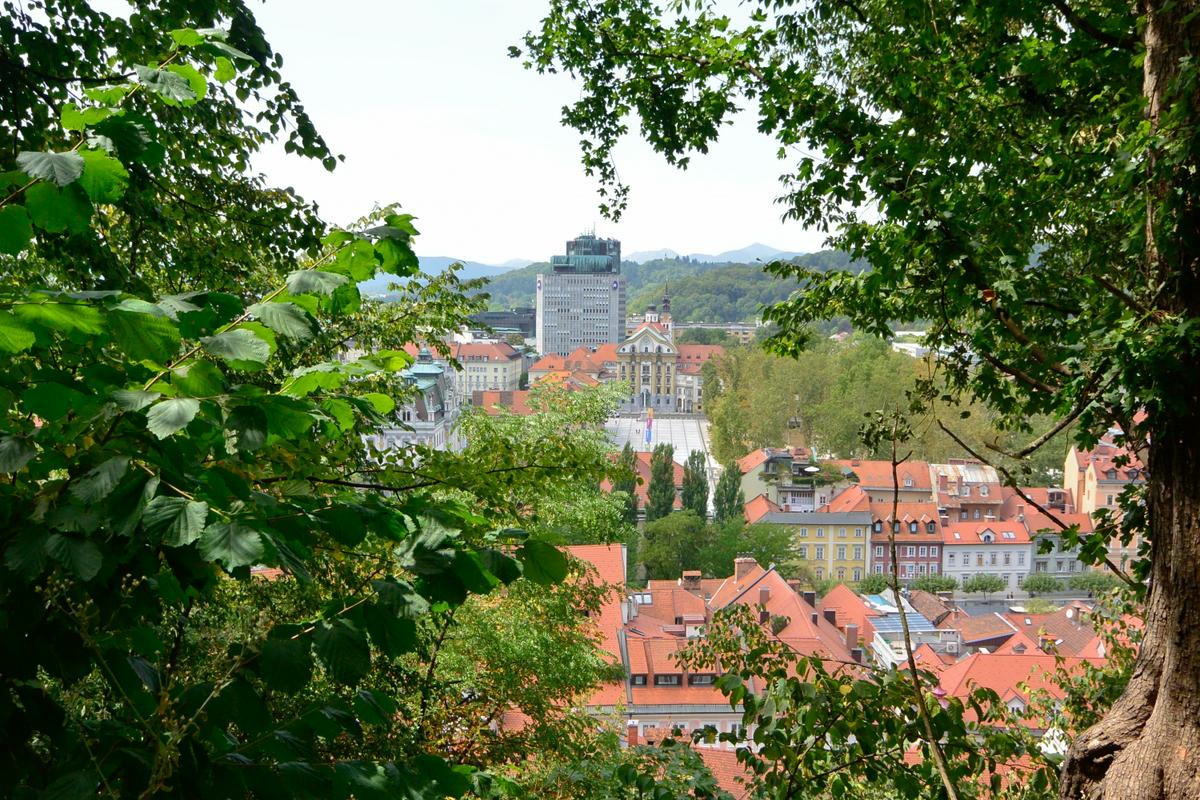

Ljubljana is a city that will surprise you and exceed your expectations. It is unique – small by surface area, but huge in its hospitality and quality of life. Its 275 km2 make it a metropolis, and at the same time it fascinates by its greenery, cleanness and safety. In the past decade, many sustainable changes have been introduced, and the European Commission has recognised this by awarding Ljubljana the title of European Green Capital 2016. According to the jury, Ljubljana is the city that made the biggest change in sustainability in the shortest period of time.
In 2007, our team introduced Vision Ljubljana 2025, with the aim of making our city a sustainable and ideal city by that date. We visualise a city that takes care of history, ensures a high quality of life, safety and tolerance, is environmentally friendly and is connected to its landscape. In the Vision, the concepts of sustainable development and urban planning are closely intertwined. Since 2006 we have successfully implemented more than 1,700 projects enacting the Vision. The representatives of the various world cities we meet often see Ljubljana as an example of good practice, pointing out the city’s determination and courage to implement sustainable mobility projects in the city centre, where we established a green zone by closing it to motorized vehicles and opening it to pedestrians and cyclists. We completely transformed the main artery in the centre with an altered traffic regime and with the creation of shared space dedicated only to pedestrians, cyclists, and public transport. Now, on the main artery there are no private motorized vehicles, and the refurbished city walkway is lined with young ash trees attracting butterflies and bees.
Big living room
The city has become revitalised with new energy; it has become not only a ecological zone but it is a big living room for diverse social, cultural, sporting, and other events where people meet and enjoy themselves. Besides, the renovated banks of the Ljubljanica River in the city centre now boast new bridges to shorten the distances pedestrians must cover. In 2012 we were awarded the “European Prize for Urban Public Space” for the project Refurbishment of the Banks and Bridges of the River Ljubljanica. Ljubljana was chosen among 347 projects from 36 countries as an example of linking green spaces with urban rehabilitation.
However, one of the major challenges was to change the established habits of residents, and to make a shift in their mind-sets in order to allow for a better quality of life and a sustainable future. For this reason, we cooperate and communicate with numerous stakeholders, especially with those who are most affected by the change. Sustainable strategies are carefully formulated, and projects are thoughtfully carried out in the cooperation with numerous local, regional, and national stakeholders. Participation in the process is not limited only to experts or certain stakeholder groups but is wide and open to all.
Green Identity of the City
According to the jury, Ljubljana successfully combines two things: the recognizable green identity of the city and actively transforming areas that not too long ago were not green or environmentally sustainable. There is a large share of green surfaces. Almost 3/4 of the city’s surface is covered with green areas. There are four nature parks in Ljubljana, among them the Ljubljana Marsh Nature Park - Natura 2000 areas constitute more than 16% of the city’s surface. The park is also listed in the UNESCO World Heritage List. We declared more than 1200 acres of special-purpose forest. Forests cover 46% of the entire area of Ljubljana and reach right into the city centre. 20% of Ljubljana’s area has natural protection status and the longest tree-lined city avenue the Path of Remembrance and Comradeship has more than 7,000 trees along 34 kilometres. We have also revitalised a large number of degraded areas and brownfields and created 80 acres of new parks. All residents access public green areas within 300 m of their homes.
Furthermore, we are continuing to offer sustainable mobility options to our residents and visitors, such as building Park & Ride facilities, greening our public transport bus fleet, prolonging the travel routes into neighbouring municipalities, expanding the network of the BicikeLJ bike-sharing system, and encouraging electrical mobility.
Ljubljana is a capital that has already exceeded the EU's recycling targets for 2020 by 10%. We rank first in separately collected waste in Europe and we are also the first European capital to be part of the Zero Waste Europe network. Our regional centre for waste management has the most advanced system of processing mixed and organic waste in Europe. It will manage waste for one-third of the country while creating new green jobs.
Outstanding Quality of Water
The main water source for Ljubljana and its outskirts is groundwater from two different ecosystems: the Ljubljana Marsh and Ljubljana Field. The water is of outstanding quality, and there is no need for technical treatment. This proves that the city’s development has been closely tied up to sustainable measures for the protection of water sources.
The city engages in many activities, campaigns and events to encourage its residents towards greener lifestyles. It has become a yearly tradition to conduct a month-long spring cleaning campaign called For a More Beautiful Ljubljana, as well as Sustainable Energy Week, and the twice-awarded European Mobility Week. We decided that every member of our so-called ‘large city family’, which comprises more than 12,000 colleagues in city administration, along with public companies and institutions, should plant their own tree. The tree-planting campaign was launched last year and it will be completed this year.
Even though we have not only met, but even exceed some important goals, one can always find room for improvement and further development. At the moment, we are implementing over 90 projects and each one of them is "green". We will continue to restore degraded areas and nurture the established green ones. To fight climate change, we will, through various measures, reduce CO2 emissions by 30% by 2020 in addition to balancing the distribution of mobility; so by the end of the decade, one-third of all journeys will be made by public transport, one-third by foot and bicycle, and one-third by car. Additionally, we will reduce water loss and preserve clean drinking water, which must remain a public good, accessible to all.
We are very proud and honoured to be the seventh European city that won the prestigious title of European Green Capital. In 2016, every month is dedicated to different sustainable topic and we are carrying out numerous daily activities with different stakeholders to raise awareness among citizens on green issues and encourage them to make Ljubljana even more green, clean, hospitable and friendly. We would like to invite readers to visit Ljubljana and experience our city first hand.
EGC2016 Team, Sinfo



































































